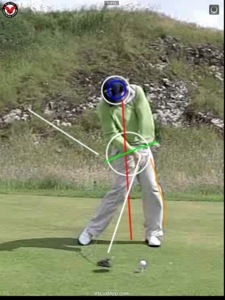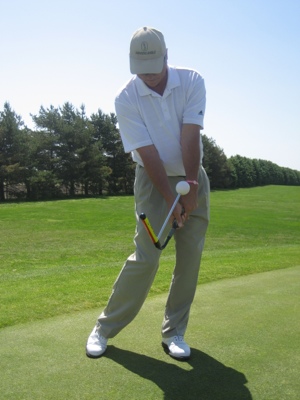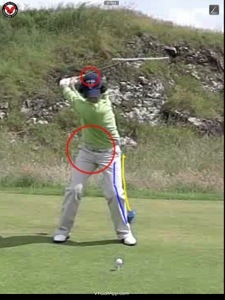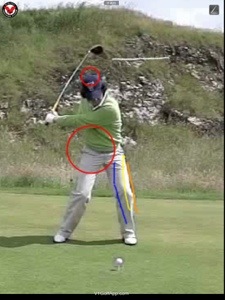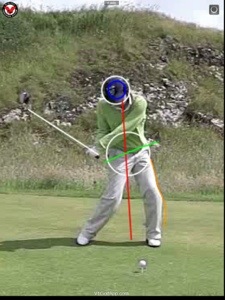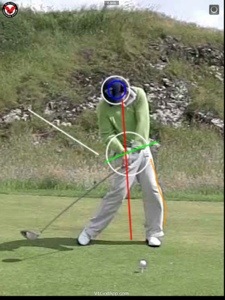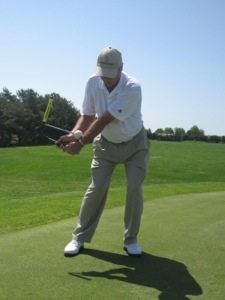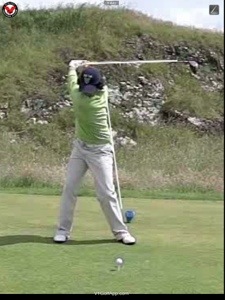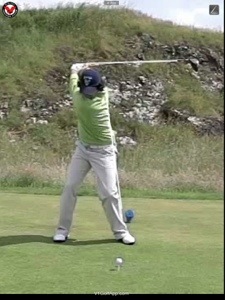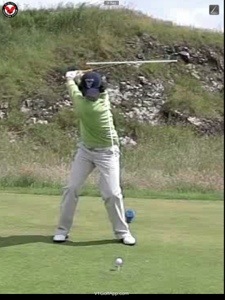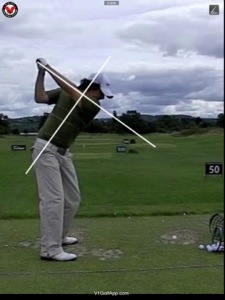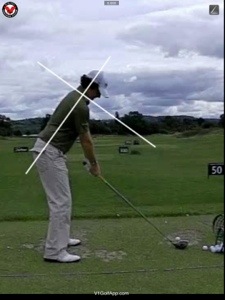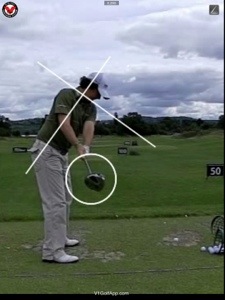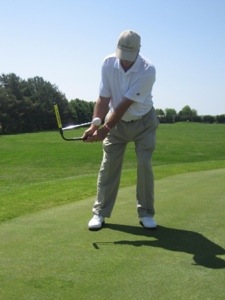Finally, the moment of truth. Regardless of what different mannerisms good players might have in the prior 4 parts of the golf swing, all good players have the following factors present at impact. You should be able to demonstrate a quality impact position with all types of swings, from driver to chipping stroke. Have a good look at the pictures below.
On the left is Rory Mcilroy and on the right is a generic depiction of impact that I use every day with my students. Years ago I created a word device that helps my students understand what qualities a great impact position contains. HIPS-HEAD-HANDS, also known as the 3 H’s. if you reinspect the pictures you will note the following: 1. Hips are pushed out to a 45degree open position to the target line, 2. Head is back, 3. Hands are in the right wrist bent position, both prior to impact,(left), and post impact, (right). Sometimes if my students are really struggling with their ball striking it is a good thing to go back to pitch shots and the “line” drill to reacquaint themselves with the 3 H’s. after some quality time spent on this important drill, (see the training video), students always comment that impact is better and easier. Below see a depiction of practicing impact with the Amazing Angle, the beat way to practice impact indoors!
Please practice slowly and deliberately ! Merry Christmas and A very Happy New Year from Keith Haley Golf. In the next post, we take on the issue of “straightening our angles”
